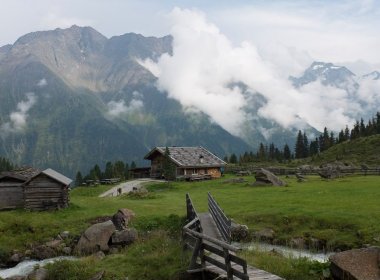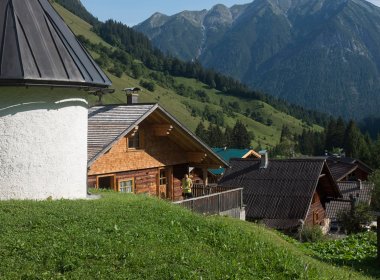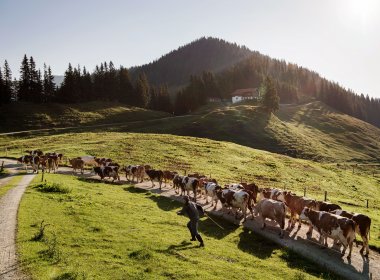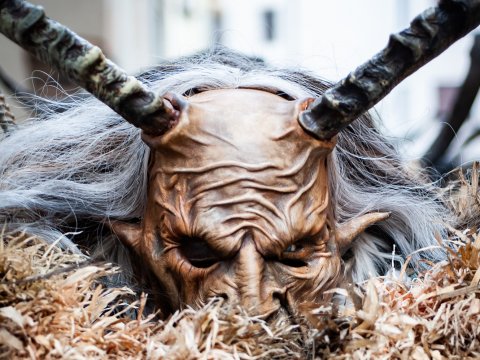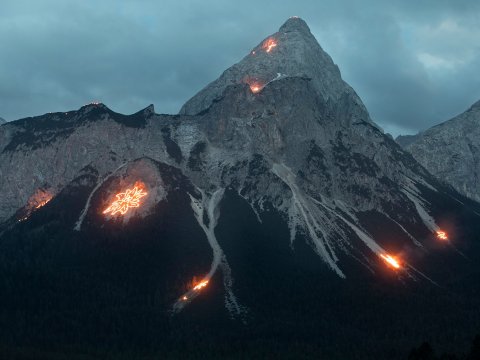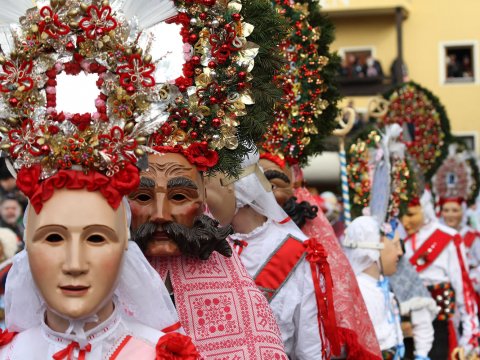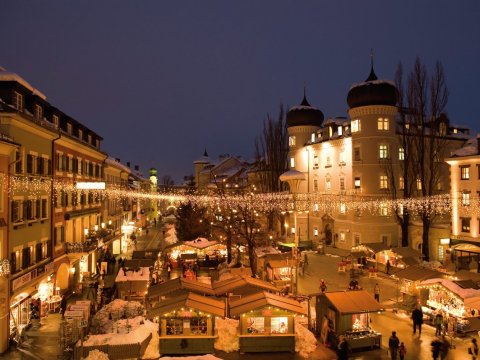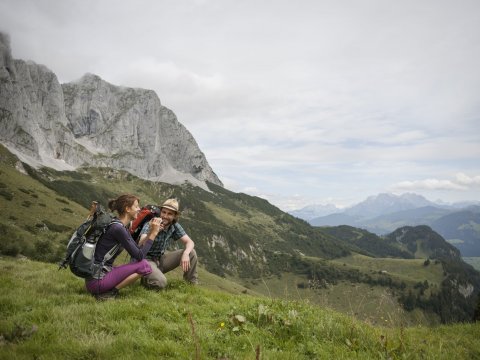Here’s Looking at Ewe: The Homecoming of the Sheep.

Deeply rooted in tradition, towns across Tirol have turned their annual relocation of livestock from the mountains to their winter stables into a reason to celebrate. Bells are clanking, nervous ewes baaing and hooves clicking down the roads and parading through the villages. Watch on as the streets fill with sheep, lambs, shepherds, locals and visitors!
Every fall, a river of sheep is rolling down the mountain, the long blanket of wool behind them. Unlike bulls racing down the street, the sheep stop several times, reluctant to pass through the crowd in front of them. Then the lead sheep takes off, and there is a blur of sheep running and jumping down the street. Visitors love the sheepdog component when they see the trusty dogs leaping on and off the sheep’s backs as they race down the street guided by shepherds, who occasionally carry lambs on their shoulders. Eventually, the flock arrives down in the valley at their designated paddocks. The sheep drive is an opportunity to see sheep up close and personal—and it’s an experience that isn’t soon forgotten.

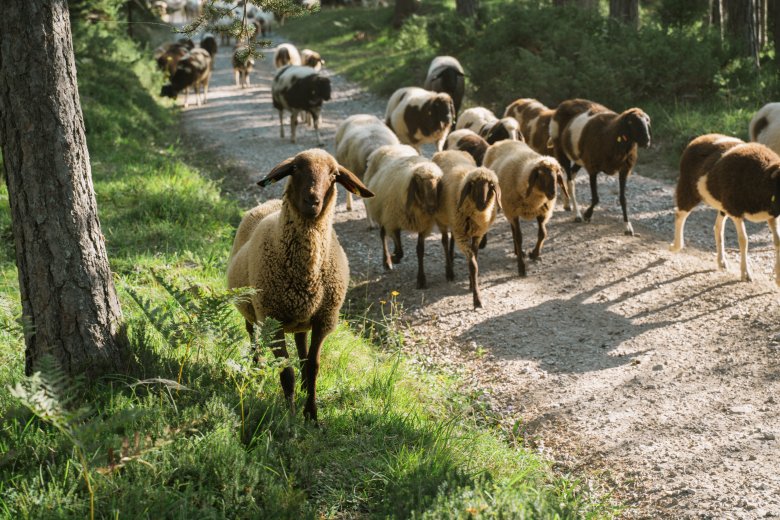
In Tirolean dialect, there are a variety of words to describe this centuries-old tradition of Alpine transhumance, which refers to the seasonal droving of grazing sheep between the valleys in winter and the high mountain pastures in summer. Each area has its own designation, like Schafschied, Schafscheid or Schafschoad, but they all have the same meaning: The sheep that have spent their summer grazing high Alpine pastures together as a flock have to be separated (the English word for German ‘scheiden’) to get driven back to their home stables down in the valley.
“Schofschied” in Tarrenz
Each year on the second Sunday of September, people come in flocks to watch about 1,000 lambs and sheep get driven down from Hinterberg Alpine Pasture to Tarrenz in scenic Gurgltal Valley in Tirol’s Oberland Area. Noted for being one of the biggest sheep drives in the country, people far outnumber the sheep to enjoy the annual “Schofschied” festival activities, which in 2020 take place on September 13.

The flocks are rounded up on the Alpine pasture on Saturday for final inspection. New-born lambs and weak sheep are transported down to the valley by car. The actual sheep drive begins on Sunday by 6:30am. Guided by shepherds, the flock slowly makes its way down. Three and a half hours later they reach their first stop in Obtarrenz, where they can drink water and are allowed to rest. The local farmers from Obtarrenz pick up their sheep from there. The remaining herd is decked out in bunches of spruce and flower garlands made of colourful crepe paper. Real flowers were nice but the sheep would eat the flowers from each other’s head.
The Strutting of the Mutton is quite a Show!
Seeing fat healthy sheep returning from a summer’s grazing on lush upland pastures is a wonderful spectacle with a feel-good factor. In Tarrenz, the strutting of the mutton is quite a show, highlighted by the running of sturdy locally-bred woolies charging down the narrow and long Trujegasse Lane around noon—and by a special variety of sheep: Among the predominantly white sheep, visitors will soon recognize “Kugelscheckige”, a rare breed of speckled mountain sheep that are distinctly patterned black and white. A breed society for “Kugelscheckige” was formed in Tarrenz and they add a pop of colour to the otherwise white flock of sheep in the drive.

Faced with the oncoming wall of wool, locals and holidaymakers line the streets and join the proud celebration on the enclosed meadow behind Gasthof Sonne Inn, where the actual “Schafscheid” takes place; that is the separation of the sheep: Each farmer looks for his sheep, marked with a distinctive sign, and takes them to his small paddock. Once he has collected all his sheep, he takes them home. It is quite common that there is a loss of animals up on the mountain slopes over the summer. “The mountain has eaten them,” is how the farmers put it.
Nowadays, the sheep are sheared on their home farms in Tarrenz, however in some villages throughout Tirol there are still sheep shearing demonstrations scheduled on the day of the great sheep drive to keep visitors entertained.
68,000 Sheep on Tirol’s Higher Pastures through the Summer
This summer, shepherds took care of about 68,000 sheep in Tirol, mostly a sturdy locally-bred named “Tyrol Mountain Sheep”. This breed is known for its hardiness and self-reliance, qualities that are important in its harsh and rough Alpine environment. The coarse wooled sheep are also known for its excellent wool quality, which results in the production of fine-quality, all-natural sheep wool products, from sheep wool carpets and slippers, cushions and blankets to bags, and much more. In Ötztal Valley, another hub of sheep breeding in Tirol, visitors can select from a delightful array of finest sheep products at the shop of Regensburger Family in Umhausen.
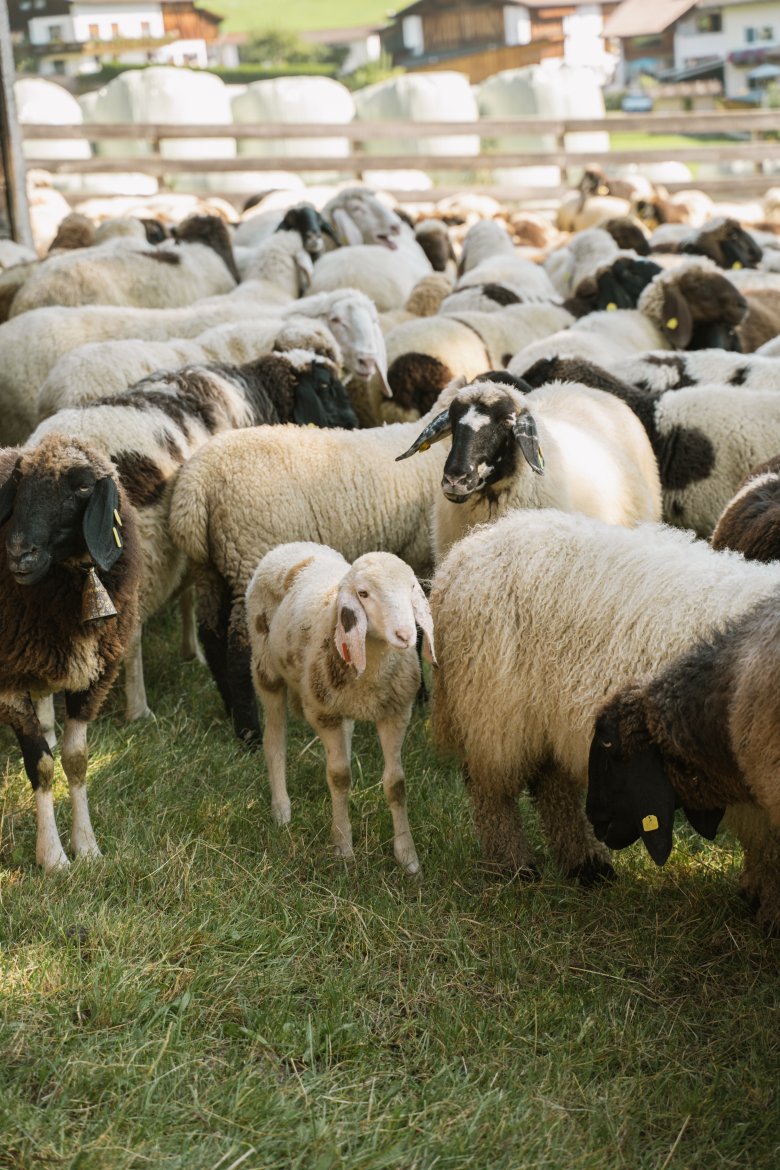
Sheep wool has recently grown in popularity, however, the “Tyrol Mountain Sheep” is also raised for meat—and lamb features heavily on the menus of many Tirol inns and restaurants at this time of year. Visitors can tantalise their tastebuds with an array of homemade lamb and mutton specialties in unique flavours with a variety of delectable tastes to suit all palettes. The diversity of flora that the sheep feed on during the summer—heathers, Alpine flowers, herbs and grasses—give the meat a distinctive and succulent flavor. The meat of the Tyrol Mountain Sheep is a well-kept culinary secret, a bona fide food treasure for conscious foodies.
A Traditional Homecoming – Tirol’s Most Spectacular Cattle Drives: Learn More










